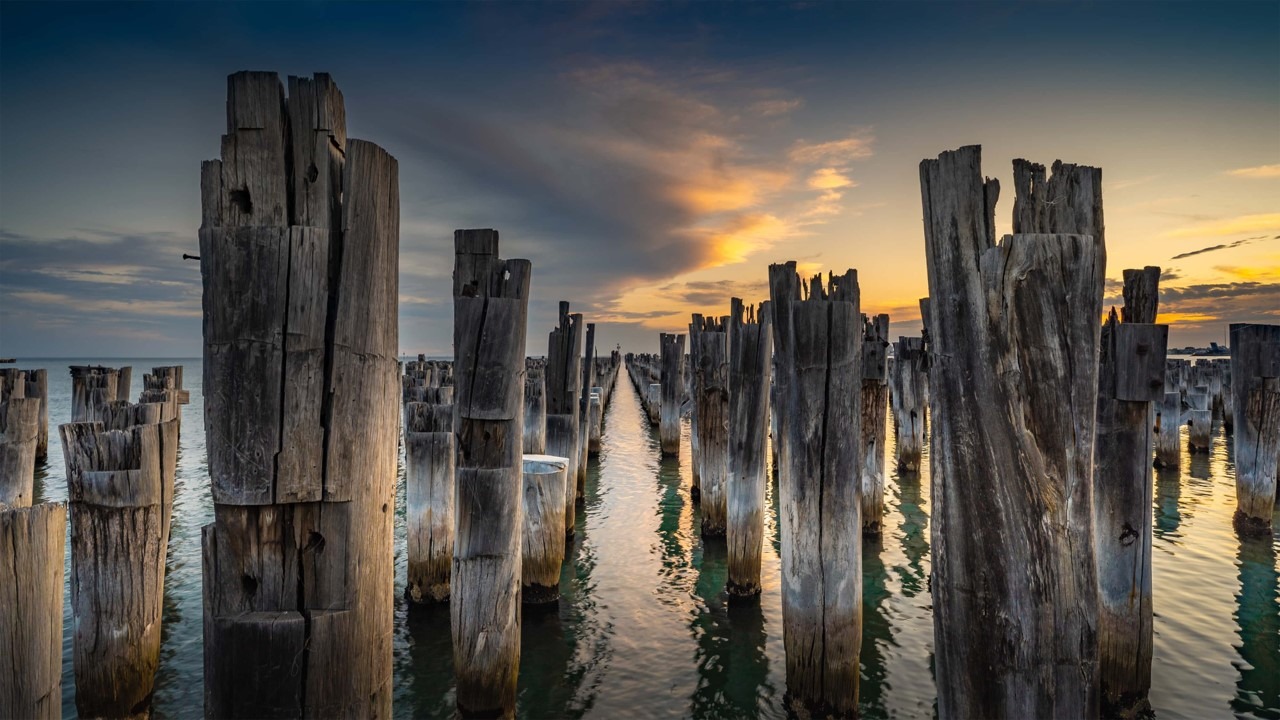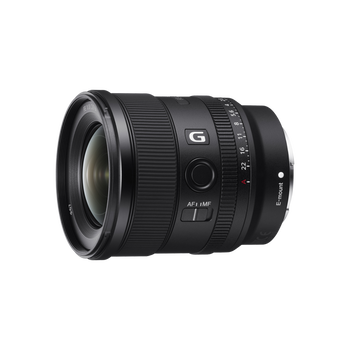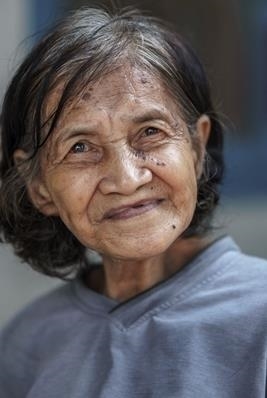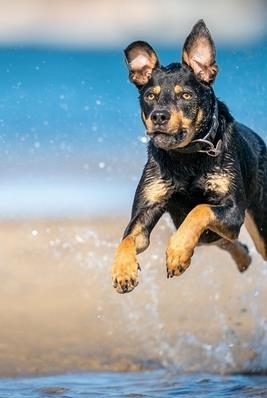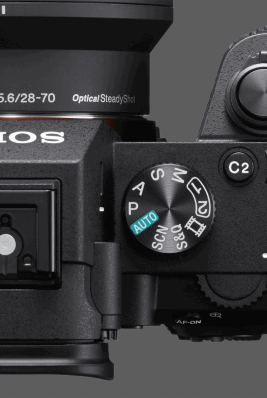The Alpha 7C shares much of its heritage with the other best-selling Alpha 7 full-frame mirrorless cameras in Sony’s line-up. The Alpha 7C, however, is a brand-new concept for Sony and the goal was to create a much more compact camera system that combines light weight with a small portable design, but one that also possesses all of the superior image quality that is afforded when imaging creators use a full-frame sensor.
This is a ‘no-compromise’ concept for content creators on the move, who would prefer to work from a small messenger bag rather than a large backpack and without sacrificing any of the image quality professionals and keen amateurs aspire to.
Check out my review of the Sony Alpha 7C Full-Frame Mirrorless Compact Camera.
Contents
0:00 - Introduction to Alpha 7C
16:31 - How to Set Up a Lightweight Kit with Alpha 7C
24:06 - Recommended Lenses for Alpha 7C
55:30 - Recommended Workflow and Settings

The Alpha 7C concept will be welcomed by imaging creators wanting to downsize from a larger full-frame camera or supplement an existing system with a more portable one. It will also be attractive to creators currently working with crop-sensor cameras who aspire to the superior image quality that a full-frame sensor can deliver.
Larger sensors are well-known to deliver better dynamic range, high ISO performance and superior figure /ground separation (the ability to render a background as a silky-smooth blur or ‘bokeh’). The jump in sensor size from either APS-C or Micro Four Thirds is not a small one. In fact, its huge. A full frame sensor has 2.5 times the surface area of an APS-C sensor and 4 times the surface area of a Micro Four Thirds sensor.

Many imaging creators may believe that increasing the size of the sensor in a camera would normally result in a larger camera, but Sony started to buck this trend back in 2013 when they launched their ground-breaking full-frame mirrorless E-Mount Alpha 7 cameras. Subsequent Alpha 7 models started increasing in size and weight as features were added, such as, In Body Image Stabilization (IBIS) and the use of the larger and more powerful batteries.
Although the Alpha 7 cameras were growing in size, they still looked tiny when placed alongside a competing DSLR with equivalent specs. The Alpha 7C has miraculously shed this extra size and weight without losing either of these valuable features. The Alpha 7C camera is, in fact, smaller and lighter than most leading APS-C and Micro Four Thirds cameras from competing manufacturers. It is also only 6 grams heavier than Sony’s own small Alpha 6600 APS-C camera.


The Alpha 7C enjoys many of the refinements we have been seeing appear on Sony’s premium Alpha 7R, 7S and Alpha 9 cameras including Real-time AF Tracking, Touch Tracking, Eye AF when shooting 4K movies, Vari-angle LCD monitor, Digital Audio recording (first seen on the Alpha 7R IV and Alpha 7S III cameras) and shake-free movie stabilization capability using the gyro data from the sensor, a virtual gimbal made possible in post-production using Sony’s free Catalyst software.
The camera shoots up to 10 frames per second and its generous buffer ensures you can shoot Raw images for more than 11 seconds before the camera starts to slow down. The Autofocus capability of this camera is simply amazing and it rarely, if ever, loses your subject. We can now even combine Animal Eye AF with AF Tracking, so your dog never outruns your camera’s ability to capture his every move in ultra-sharp detail.

One of the challenges for a creator building a full-frame mirrorless system, one that can take advantage of the size and weight savings of the Alpha 7C camera, is to choose lenses wisely. This is because some of the lenses designed for full-frame cameras can be heavier and larger than equivalent lenses designed for cameras using cropped sensors. Sony, however, did not restrict their attention to shaving weight and size from only the camera.
Sony also turned their attention to the FE 28-60mm F4-5.6 standard zoom lens (sometimes referred to as ‘the kit lens’). Sony has moved to create the world’s smallest and lightest full-frame standard zoom lens to compliment the weight savings made with the Alpha 7C camera. The new lens is over 40% smaller and lighter than Sony’s original kit lens designed for the Alpha 7 mirrorless cameras back in 2013. The new lens weighs in at just 167 grams and its clever retracting design, when it is not in use, ensures it takes up very little space in your camera bag – even when attached to the camera.
Some imaging creators may be put off by the idea of using a kit lens because associated cost savings can often lead to lower quality when compared to premium zoom lenses or primes. Sony, however, have weaved some magic in designing this new standard zoom lens and created a lens that can deliver corner-to-corner sharpness, even when capturing images with the aperture wide open. It offers fast autofocus (courtesy of a linear focus motor) and weather sealing. What more could one ask for from a kit lens – a perfect partner for the Alpha 7C camera.

An imaging creator wanting to extend their creative possibilities beyond the small kit lens, would be well advised to pick a couple of wide-aperture F1.8 prime lenses from Sony’s FE lens stable.
My personal choice would be to add the FE 20mm F1.8 G and FE 85mm F1.8 (both weighing in at under 400 grams each). The FE 20mm F1.8 G provides the Alpha 7C creator with an ultra-wide-angle panoramic view, exceptional low-light performance for low ambient and night photography and even allow the creator to take on Astro (to infinity and beyond).


The FE 85mm F1.8 meanwhile, provides the creator with the classic wide-aperture portrait lens that is both light and portable, but can deliver exceptional sharpness wide open, beautiful bokeh, care of its wide aperture, curved aperture blades and a short telephoto focal length. Both of these primes are also fast focusing so the entire extended kit is capable of taking on fast action photography.
For creators wanting to switch out the standard focal lengths of the standard zoom for something with a wider aperture, my personal recommendations would be to check out Sony’s ultra-sharp FE 35mm F1.8 and FE 55mm F1.8 ZA primes (both weighing in at under 300 grams each). For creators wanting a combination of wide angle of view and ultra-shallow depth of field, I would recommend checking out Sony’s lightest G Master lens, the FE 24mm F1.4 G Master. All of the primes mentioned are pin-sharp when used wide open and provide a light and small camera/lens combination in the hand. The form factor is so small I have taken to using a wrist strap instead of a neck or shoulder strap to carry the camera.


Vloggers would also be strongly advised to check out Sony’s Bluetooth accessories including the ECM-B1M Digital Shotgun Microphone, the ECM-W1M Bluetooth wireless microphone system and the GP-VPT2BT Bluetooth Grip. These lightweight accessories take full advantage of Sony’s Multi-interface shoe and Bluetooth communications capability so the Vlogger can completely dispense with plug-in cables while maximizing audio recording quality.
For those creators interested in a little Macro I would recommend switching out the FE 55mm F1.8 ZA for the small and light FE 50mm F2.8 Macro (236 g) or use an AF Macro Extension tube on an existing F1.8 prime. The FE 135mm F1.8 G Master also offers a very close focusing distance combined with its telephoto reach. It may fall short of being a true Macro option, but small flora and fauna can often be made to fill the frame with this combination.
For creators who are looking to marry their favourite classic lenses from yesteryear with the cutting-edge technology of a modern Sony full-frame camera body, the good news is that almost any lens ever designed can be adapted to the Alpha 7C camera.
Older Sony A-Mount and Minolta lenses can be adapted via Sony’s smart LA-EA5 adapter and those lucky enough to have vintage (or perhaps vintage lookalike) rangefinder lenses can adapt them via a somewhat smart AF adapter. In this manner a manual focus lens with no image stabilisation can become an autofocus lens (all be it a little slower than a native E-Mount lens), that is also stabilised via Sony’s In Body Image Stabilisation (IBIS or SteadyShot Inside). Your good glass gets to live again.


If the Alpha 7C creator avoids the F2.8 telephoto zooms and the superzooms (28-200mm, 24-240mm or 70-300mm), then the entire kit (including spare batteries, filters, tripod), can be kept to approximately 3 KG including the camera bag. I would recommend creators who need a little more reach than the FE 85mm F1.8 affords, but also want to keep the kit weight down, to consider a 135 mm prime or an F4 70-200mm, such as the FE 70-200mm F4 G OSS.

I have become a little obsessed in recent years with creating the ultimate lightweight camera kit, for ease of travelling. Something that is so small it can be slid underneath the airline seat in front of me and can be carried everywhere with the minimum of fuss. The entire kit can also be squeezed into the small safe you often find in a hotel room or kept on your lap when travelling on a bus or train.
Some of the non-Sony items that help me keep the weight down when travelling is the use of a tablet or mobile phone, instead of laptop, for editing and archiving and the use of small lightweight table-top tripods, instead of the 2 KG+ metal goliaths that are so often carried by creators.
The use of a table-top tripod is made possible by the excellent stabilised sensor, or SteadyShot, that allows me to photograph hand-held at first, or last, light of day with the aperture closed down to F11, while keeping the ISO low. For slow exposure landscapes I prefer a very low vantage point and the Vari-angle LCD monitor makes everything from seascapes to Astro possible, without me having to lie down on the ground to see what I have framed.

Another product that was announced the same day the Alpha 7C was launched is a smaller and lighter (219 g), but no less sophisticated, Radio flash (Sony’s new HVL-F28RM).
For photographers wanting to use fill-flash in the harsh midday sun, or when their subject is backlit, the HVL-F28RM offers all the power a location photographer needs. I have to say that for the reportage/narrative editorial work I capture, I can simply add fill-light in post-production. I simply drag a radial filter in Adobe Lightroom with +1.00 stop exposure to lighten any backlit subject.
The shadow detail of Sony’s backlit illuminated full-frame sensors is so fabulous, recovering excessively dark shadows in post does not weaken image quality. This is, of course, one of the major strengths about choosing to work with a Sony full-frame camera system. The dynamic range of the full-frame backlit illuminated sensor is so broad, and the high ISO performance so good, that image quality is maintained even when viewed on the largest of 4K monitors, or exhibition-size prints.


